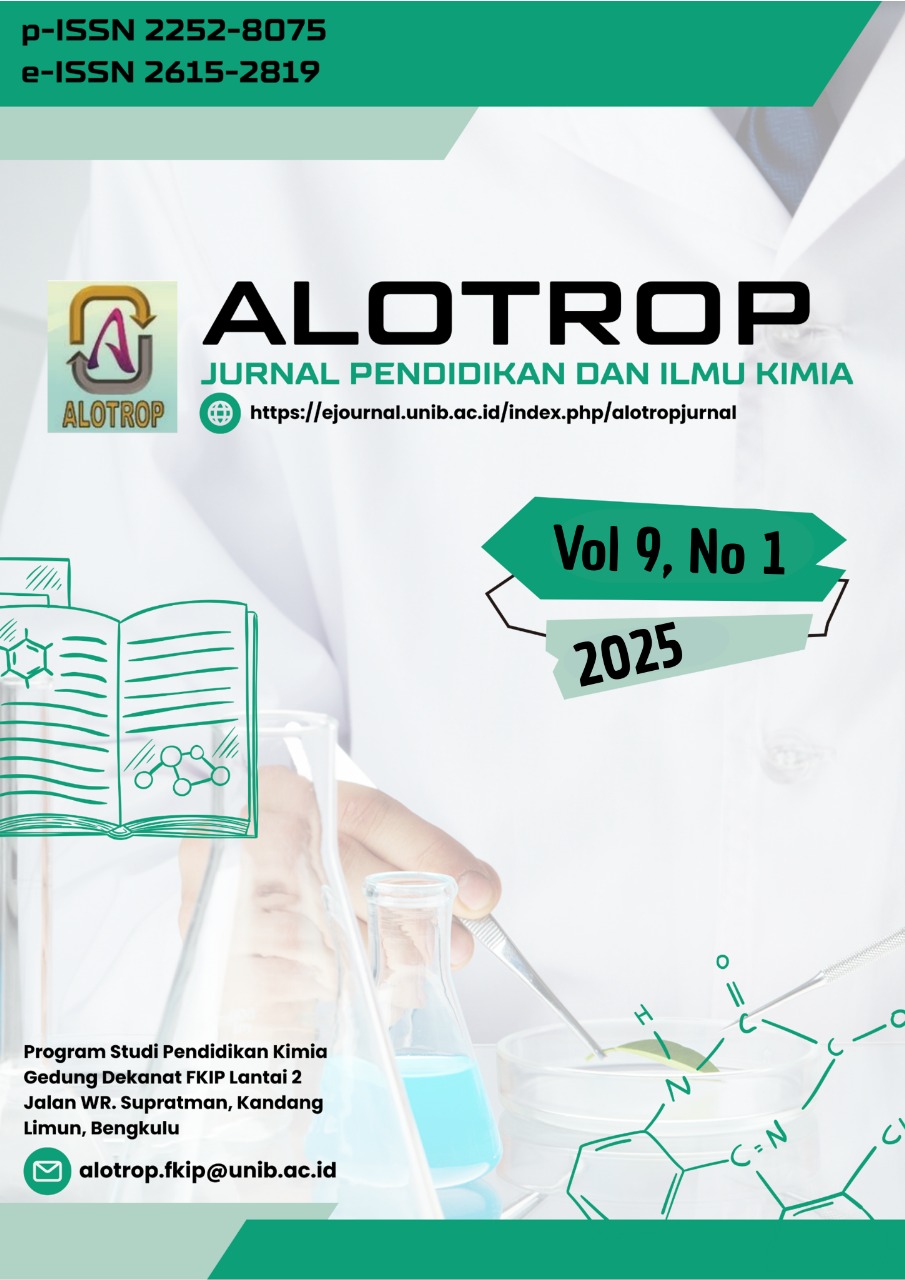Main Article Content
Abstract
This study aims to test the feasibility of the developed learning media and determine student responses using the ADDIE development model. The data collection instruments used were in the form of interviews with chemistry teachers, validation sheets and student response questionnaires. The research was conducted at SMA Negeri 08 Bengkulu City to 30 students of class XI IPA 4. From the research results obtained, the feasibility level of Learning Media in the media aspect is 95.32% while the material aspect is 82.5%. The average percentage of the feasibility level of the Learning Media developed is 89.25%. Based on the results of validation by the Learning Media validator, the developed media is very valid, and based on the results of product trials, the student responses get a percentage of 88.85% which is in the very good category. The results of this study indicate that the Power Point Learning Media with Ispring Suite 9 on the buffer solution material that has been developed is very feasible to use and feasible to be applied to the learning process
Keywords: Research and Development; Learning Media; Power Point; Ispring Suite 9; buffer solution
Article Details
Copyright (c) 2025 Yornia Sianturi, Sura Menda Ginting, Hermansyah Amir

This work is licensed under a Creative Commons Attribution-ShareAlike 4.0 International License.
Authors who publish with this journal agree with the following terms:
- Authors retain copyright and grant the journal right of first publication with the work simultaneously licensed under a Creative Commons Attribution License that allows others to share the work with an acknowledgment of the work's authorship and initial publication in this journal.
- Authors are able to enter into separate, additional contractual arrangements for the non-exclusive distribution of the journal's published version of the work (e.g., post it to an institutional repository or publish it in a book), with an acknowledgment of its initial publication in this journal.
- Authors are permitted and encouraged to post their work online (e.g., in institutional repositories or on their website) prior to and during the submission process, as it can lead to productive exchanges, as well as earlier and greater citation of published work (See The Effect of Open Access).
- This work is licensed under a Creative Commons Attribution-ShareAlike 4.0 International License.
